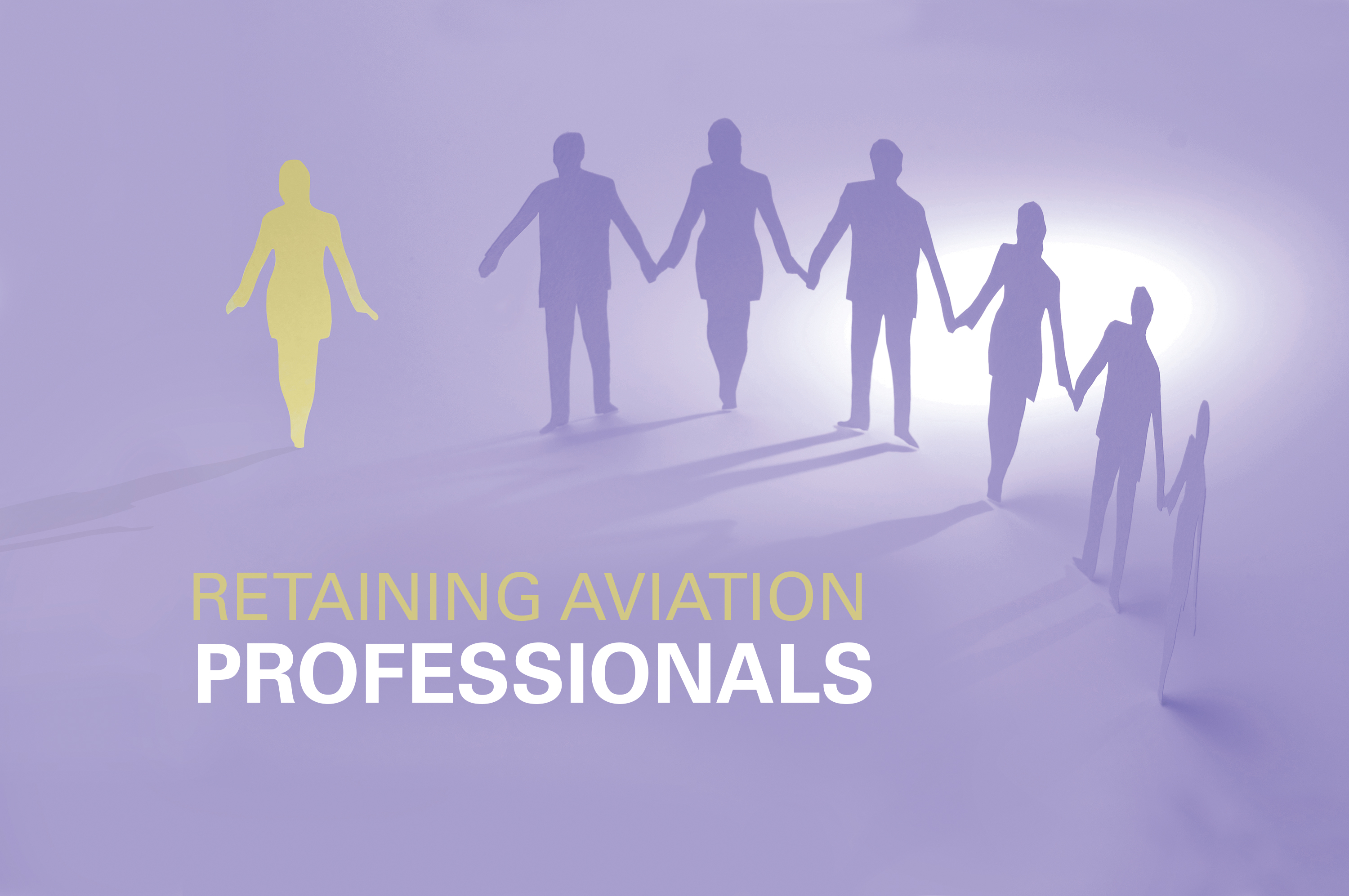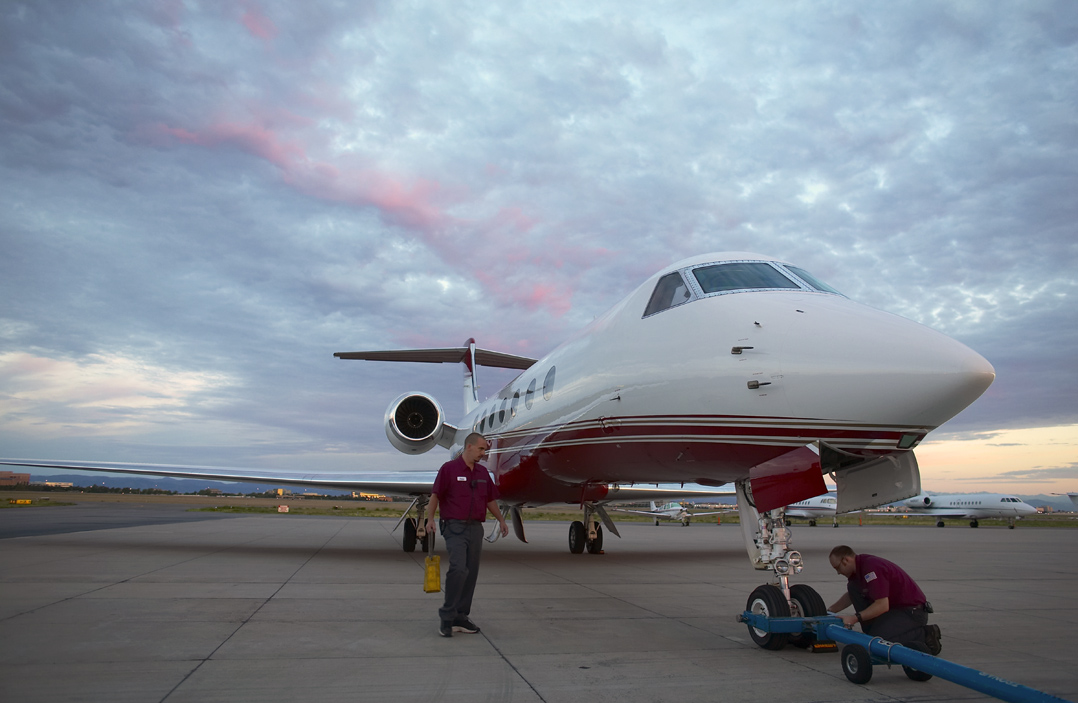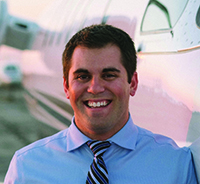
May 21, 2018
Business aviation operators need practical strategies for holding on to their best pilots, maintenance technicians and other top talent.

Business aviation is facing a critical shortage of pilots, maintenance technicians and other skilled aviation professionals. As a result, managers are looking for tangible, proven strategies that flight departments can use to retain their best people.
The first step is to understand what the competition – the major airlines – are offering in terms of compensation, benefits and work/life balance to lure pilots, technicians and others away from business aviation.
Last summer, one manager – Greg Adams, director of operations at Jen-Air LLC – evaluated several airline packages and contract agreements. After completing that review, he compared that data to NBAA salary surveys and the compensation offered by his company. Adams found that his company’s existing policies regarding salary and bonuses needed relatively minor changes, but the retirement contributions could be improved, so his company made significant changes to its 401(k) match.
But airlines aren’t business aviation’s only competitor for highly skilled personnel – business aviation is its own competition.
“Losing a pilot or mechanic is a vicious cycle because the organization that lost the employee often looks to other flight departments to fill the position,” said Sheryl Barden, president and CEO of Aviation Personnel International. “This is one of the reasons we are seeing an incredible amount of [personnel] movement right now.”
Creative Compensation, Educational Benefits
An annual cost-of-living pay increase, holiday bonus and modest retirement-fund match is no longer adequate to retain the best aviation professionals. More creative compensation plans are needed.
For example, some companies are giving raises twice a year instead of annually, while others are offering retention-pay increases.
“We are seeing organizations get more creative in mon-etary retention plans,” said Zoe Katsilis, manager of staffing services at Jet Professionals, LLC. “Some com-panies are even offering one- to five-year bonuses related to retention.”
These retention packages might include predetermined annual salary increases if the employee stays with the company for a set number of years, or annual bonuses for each year with the company. Some companies are offering increased retirement contribution matches with each year of employment.
Barden suggests considering “competitive pay differentials,” similar to a cost-of-living adjustment, which can be adjusted if the market corrects itself at some point.
Experts say operators should not only consider raising salaries and enhancing retirement benefits; they should consider offering educational benefits, too.
Duncan Aviation helps team members by providing tuition reimbursement as they earn associate, bachelor’s and graduate degrees, as well as when they obtain a private pilot’s license or instrument rating, said Leon Holloway, Duncan’s manager of human resources. “We recently increased our tuition reimbursement amounts and even developed university partnerships that feature university matching of our tuition reimbursement.”
Address Work-Life Balance Concerns
Business aviation can’t always compete with the airlines based on money. The industry has to provide quality of life and career development, too.
“The challenge goes above and beyond pay and benefits. A big factor is quality of life,” said Adams. “With airlines, when you’re not working, you can turn off your phone or not answer it.”
“Being able to turn one’s phone off at the end of a duty day is a big deal for a lot of pilots,” said another professional aviator. “How can we provide a reliable way for business aircraft pilots to enjoy important events with their family, such as birthdays, anniversaries, holidays and kids’ sporting events?”
Staffing at reasonable levels is an important aspect of quality of life. Many aviation operations maintain only the minimum number of crewmembers for each aircraft type or employ a minimum number of maintenance personnel. That strategy results in fewer days off and less schedule flexibility. To counter that, some companies now aim to have three pilots for each two-crewmember aircraft type.
Generally speaking, hiring additional staff can help ensure a better work-life balance for all personnel and result in retaining qualified professionals longer.
“We’ve worked hard to acknowledge that quality of life is a big part of attracting and retaining good people,” said Adams. “We recognize that regularly scheduled days off, in addition to vacation, are an important part of providing a good quality of life.”
Provide a Career Path
Career-minded professionals are typically motivated by a clear plan for salary increases, bonuses and retirement contributions. The airlines have defined advancement programs, which help professionals plan their careers.
For operators that only fly one or two aircraft, there are ways to provide career development opportunities instead of the traditional path of advancement. One example is to give personnel opportunities to volunteer with industry groups like NBAA. Another is to offer ancillary duties (with corresponding pay increases, of course) to challenge staff members and enable them to learn new skills.
“Employees want to know what the end of their career looks like,” said Barden. “Collective bargaining agreements make airline career paths very transparent. Business aviation doesn’t have that transparency, but we have to find a way to address career progression.”

Tips for Business Aircraft Operators
- Know your competition.
- Communicate your retention plans to your staff.
- Offer creative compensation packages, including retention bonuses and mid-year salary increases.
- Staff appropriately to create reasonable work-life balance.
- Provide a clear path for advancement, networking outside of your organization, if necessary.
- Educate your candidates, personnel, principals and human resources experts.
Christopher M. Broyhill, CAM, and vice president of consulting, Mente Group, LLC, agrees. “We need to seriously examine the issue of career progression in our industry. In many business aviation organizations, especially smaller ones, opportunities for advancement are limited because the management jobs are often occupied until the person in the position retires, leaves or is promoted. Hence, if a pilot wants to advance, he or she will have to leave the organization and go elsewhere. I think that paradigm is going to have to change if we’re going to retain people in our industry.”
Ask ‘What Do You Want?’
Unfortunately, aircraft operators sometimes lose good personnel while they are in the midst of upgrading salaries and benefits. So, it’s important to keep staff members informed that managers are working on ways to enhance compensation packages.
In some cases, when it comes to benefits, changes can only occur at certain times of the year. If employees know that their company is planning to improve retirement matching formulas or enhance other benefits, they may be more inclined to stay, even if they must wait months for those benefits to be realized.
Meanwhile, employment experts suggest that managers should directly ask team members what they are looking for in their careers.
“It is hard to know where employees find value,” said Elaine Lapotosky, director of operations at Jet Professionals, LLC. “Do they find value in growth and professional development, opportunities to volunteer within the industry, or salary and benefits?”
The only way to know is to ask. Duncan Aviation has employed this strategy by conducting “stay interviews.”
“We implemented ‘stay interviews’ during which managers interview their top performers to ensure we are meeting their employment needs and fulfilling their desire for meaningful work,” said Holloway. “We have discovered that this extra attention and concern speaks volumes to the team member about his or her worth to Duncan Aviation.”
Educate Aviation Personnel, HR Experts
“Retention starts with the [job] interview,” said Lapotosky. “Understand who you are hiring and what they are looking for in a career. Pilots are educating themselves about industry salaries and trends. We also need to educate them on the reality of the aviation market today and the challenges or disadvantages for an airline career,” Lapotosky added.
Aviation managers should also educate key financial decision-makers and human resources personnel about current trends in aviation salaries and benefits.
“The challenge is educating principals regarding industry trends,” said Katsilis. “You need to work with human resources, learn to speak their language and share realistic salary data.”
“Because the industry has been reasonably stable for a long time, the current environment might be a surprise to financial decision-makers,” noted Barden.
Aviation employment experts suggest that conversations with principals should emphasize safety.
“Your people are the most valuable part of your organization,” said Adams. “It’s a matter of safety. People are the key to safety.”
“We can’t expect to have top talent if we don’t compensate them properly,” continued Adams. “Accidents are either caused by human error, or humans are the final defense against an accident. Why would you want those humans to be anything but the best?”
Holloway declared, “A company’s top talent truly creates the company through culture, innovation, efficiency and engagement. Be sure you identify your top contributors, and be sure to invest in them personally, engage them in their work, and continue to challenge and develop them through formal education, on-the-job training and special project work.”
View This Article in the App
This article originally appeared in the January/Feburary 2018 issue of Business Aviation Insider.



 International Business Aviation Council Ltd.
International Business Aviation Council Ltd.